Olympus M.Zuiko Digital 75 mm f/1.8 ED
3. Build quality
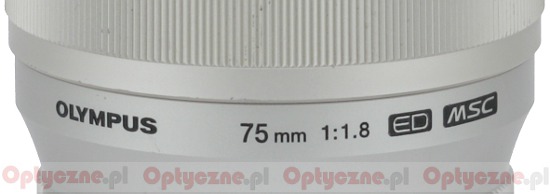 |
It would be difficult to compare the tested lens to any other mirrorless devices. In fact you won’t find a portrait instrument, being the equivalent of 135-150 mm focal lengths on full frame, in any of mirrorless systems. The Samsung NX 1.4/85 seems to be the closest to those parameters and that’s why it was used in the following comparison. Of course there can’t be any binding conclusions because both lenses, although they can be used for the same purposes, differ in aperture, focal length, the size of the field of view and the material they were made of. It won’t be especially revealing if we say that the slower Olympus, designed for a smaller detector, is far more handy than the Samsung. The comparison of their physical weights is interesting, though. The Samsung is over two times heavier despite the fact that it is not made entirely of metal. F/1.4 aperture, a bigger field of view and the presence of the ultrasonic autofocus motor make themselves felt.
Please Support UsIf you enjoy our reviews and articles, and you want us to continue our work please, support our website by donating through PayPal. The funds are going to be used for paying our editorial team, renting servers, and equipping our testing studio; only that way we will be able to continue providing you interesting content for free. |
- - - - - - - - - - - - - - - - - - - - - - - - - - - - - - - - - - - - - - - - - - - - - - - -
In the photo below the tested lens is positioned next to its smaller and cheaper 1.8/45 cousin and the Voigtlander Nokton 0.95/17.5.
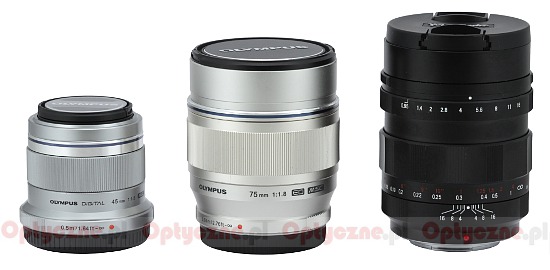 |
The Olympus M.Zuiko Digital 75 mm f/1.8 ED starts with a metal bayonet mount with contacts. Its rear element is less than 22 mm in diameter and it is situated almost at the same level as the mount. It is immobile so the lens sets focus through shifting elements inside the construction.
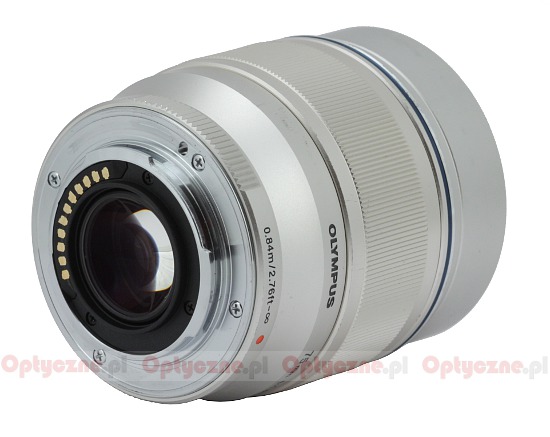 |
The proper body of the lens, which is made of metal and covered by silver paint, starts with a narrow ring, ribbed on both sides; in the middle of it there is a piece of info concerning the focusing range (from 0.84 m) and at the back – the serial number of the lens and the logo of the Micro 4/3 system. The next part is an immobile, widening part of an inner tube on which you can find the name and parameters of the lens and the information that it was made in Japan.
Further on you find a manual focus ring with electronic transmission, 26 mm wide. Most of it is covered by fine ribbing, it is well-damped and it works smoothly. The problem is that its cooperation with the E-PL1 is a kind of failure. If you want to set the focus manually you have to enlarge your viewfinder image (by the way in the E-PL1 that option switches on automatically when you move the ring). The magnified image, with the equivalent of the 150 mm focal length, trembles so significantly that pointing at anything and setting focus with any precision is really very difficult. Overall the work of the ring in the manual mode is so difficult and counter-intuitive (the same movements of the ring in different positions have different steps) that it is even difficult to assess what is its full working range or express it in degrees. Perhaps the author of this test is already too old to test such new gadgets but he definitely prefers classic manual focus rings, equipped with a distance scale and a depth of field scale. Everything is clearly visible there, you don’t have to switch on a camera to know what distance is set on the scale.
The next element of the lens is a blue strip behind which you can find an immobile part of the tube; it ends abruptly, without any mount or filter thread. The final part of that tube is threaded inside so you can screw in a filter, 58 mm in diameter. The front element of the lens has a diameter of 48 mm and is surrounded by a black part of the casing on which you can find the name and parameters of the lens.
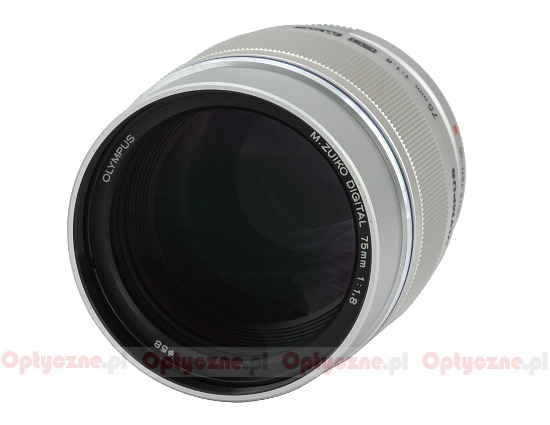 |
When it comes to the inner construction we deal here with 10 elements positioned in 9 groups. The producer wasn’t skimpy when it comes to special elements. Inside the lens you can find as many as three low-dispersion ED glass elements and two made of HR glass, with a high refractive index. Additionally Olympus boasts of using special ZERO coatings (ZUIKO Extra-low Reflection Optical), which are about two times more efficient than classic anti-reflection coatings. Everything is complemented by a circular aperture with nine blades which can be closed down to the value of f/22.

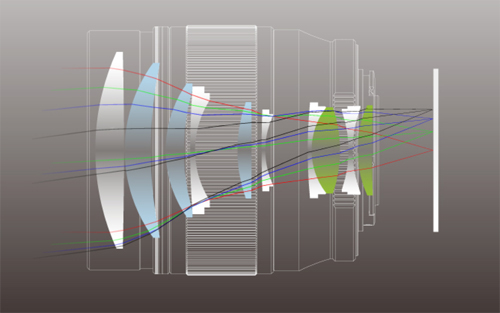 |
It is a bit unpleasant to write here but such a splendidly made lens, costing a lot, comes with only caps in the box. A pity- some kind of case, protecting its silver paint would be very handy as the lens, a beautiful example of Japanese engineers’ work, can be quite easily scratched and/or made dirty.
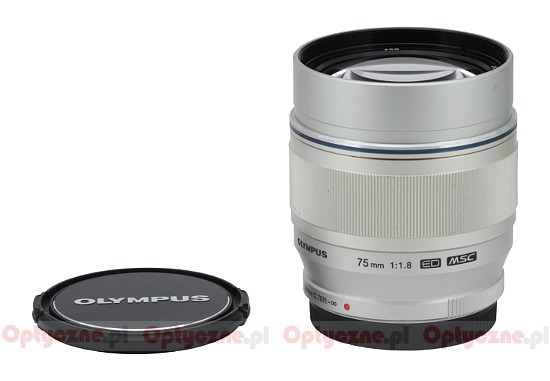 |






